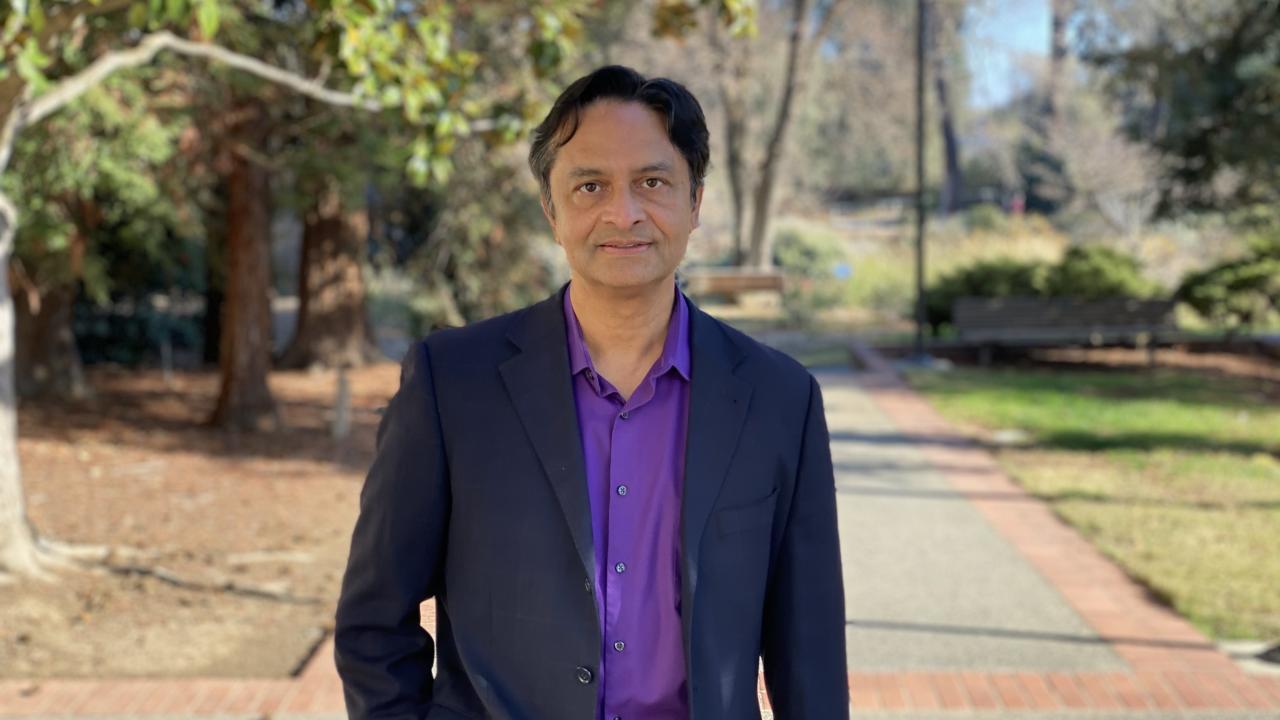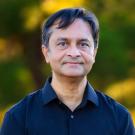
UC Davis ECE Professor Saif Islam Develops Complex Nanostructures for Parallel Manufacturing in Electronics and Photonics
His son Rayyan Islam, UCD ECE student, follows in his footsteps
Quick Summary
- Saif Islam invented a bottom-up manufacturing technique for nanowires, known as nano-bridging, that opens door to many applications
- He says it is time to go beyond strictly silicon components and his technique makes combining materials easier
Over many years of research, UC Davis electrical and computer engineering (ECE) professor Saif Islam has developed revolutionary new techniques to construct tiny and sensitive nanostructures for the massively parallel nano-manufacturing of electronics and photonics.
Islam says the time has come to go beyond strictly silicon-based electronics components. In addition to the increasing cost of creating even smaller and more complex silicon-based devices, the material has inherent technical limitations.
“Silicon is not particularly good at many things, such as light emission or detection for photonic applications, surviving high temperatures beyond 250 degrees Celsius or operating in a high radiation environment. Combining silicon with non-silicon materials can allow more robust system performance such as increased computational speed, higher temperature and power handling capability, light generation and detection while taking advantage of the well-established multi-billion-dollar silicon foundries for manufacturing integrated circuits and systems.”
It's difficult though, to layer non-silicon material over silicon because of crystal structure incompatibilities and differences in thermal and mechanical properties. So, Islam’s lab is combining materials processed through both top-down and bottom-up approaches in order to work around this.
Islam and his colleagues invented a bottom-up technique to create these nanowires in the shape of bridges between a pair of electrodes so they can be connected to other materials. The nano-bridging technique does not require the tedious nanowire alignment and contact formation processes usually involved with connecting these nanowires to our macroscale world.
“[Nano-bridging] allows the fabrication of diminishingly small features on 2D surfaces. It opens the door to fabricate 3D [features] of any arbitrary shape and orientation on any substrate. You can make them look like needles, trees, combs, etc.”
These combined fabricated materials open up the possibility of new applications in computing, memory, and sensing. They can trap propagating photons and slow them down for efficient sensing or energy harvesting from sunlight. They can help build ultra-sensitive chemical sensors for cancer detection at a very early stage or ionize gases to detect them at extremely low concentrations.
In Islam’s lab, researchers grew nanowires and nanopillars from silicon, germanium, gallium arsenide, gallium nitride, or indium phosphide on conventional silicon wafers for sensors, transistors, memory and detectors.
Because of their very small dimensions, nanowires of any material can be grown on any substrate. This can help create smaller circuits that can emit light for optoelectronic applications and withstand temperatures as high as those inside a jet engine.
Islam’s group also invented a light-trapping technique to make silicon more sensitive to light and thus a better light sensor. They bend beams of light by 90 degrees using a periodic array of micro and nanoscale wires and holes. This slows photons down and improves light absorption efficiency, making possible ultra-fast photodetectors for datacenter communication, sensors for advanced LIDAR, quantum communications, and highly efficient solar cells. This work landed Islam an article in Nature Photonics.
Islam co-founded two start-up companies based on his group’s inventions. Some of his 41 patents have undergraduate students listed as co-inventors. His commercialization work was supported by UC Davis, UC Office of the President, NSF and Nevada Institute for Renewable Energy Commercialization (NIREC). In 2018 he received the Sacramento Region Innovation Award.
Next steps for the Islam group will focus on interdisciplinary advanced bio-imaging, cell-monitoring, miniaturized cameras for live-cell monitoring and agricultural sensing.
“We’ll use nanophotonic devices and ultrafast light beams to understand and decipher the “messages” that our tissues and cells are conveying when we get sick. Traditional techniques and tools are expensive and bulky and can’t adequately grasp this biological information.”
Islam sincerely appreciates the chance to do research as part of UC Davis’ ECE department.
“Serving as a faculty of the ECE department and getting opportunities to collaborate with the outstanding faculty have been a tremendous scientific and professional honor of my career. I am grateful to the department and the college for the support and confidence and the incredible and dedicated staff of our university. I am thankful to my faculty, staff, and my students for helping make this a rewarding journey for me.
Islam’s group is very actively involved in outreach to K-12 students in Davis, Sacramento and Oakland. They share about their research with the students of the Bay Area Technology Academy as well as with high schools in Oakland and Orangevale.
One student Saif Islam has inspired is his own son, Rayyan, who got exposed to ECE at UC Davis early in his childhood.
"I am currently a first-year studying Electrical Engineering. I have had the privilege of visiting the ECE department since elementary school for events such as K-12 outreach, Picnic Day showcases, and the end-of-year holiday parties. I was fascinated by the liquid nitrogen experiments at the ECE department. My long and deep connection to the UC Davis ECE department and its outstanding faculty ultimately influenced my decision to attend here."
He goes on to describe his current courses, research and projects, all of which the department makes available to undergraduates.
"I've also worked with several Ph.D. students and postdocs by assisting them in several research projects. During the summer of 2019, I participated in the rewarding Internet of Things COSMOS Cluster taught by Profs. Xiaoguang Liu and Hooman Rashtian. I have been teaching a coding course since 2019 to youth in underserved communities under the support and supervision of Prof. Nazli Gundes. Since 2020, I have been working on an exciting project with Prof. Weijian Yang’s group on building a miniaturized microscope. In my first quarter, my favorite class was EEC07 Programming with Microcontrollers, taught by Prof. Diego Yankelevich, due to its exciting project-based curriculum."
Islam plans to attend graduate school and continue in the engineering field after graduation. With his father for an example, he comes from a long line of insightful UC Davis engineers.

